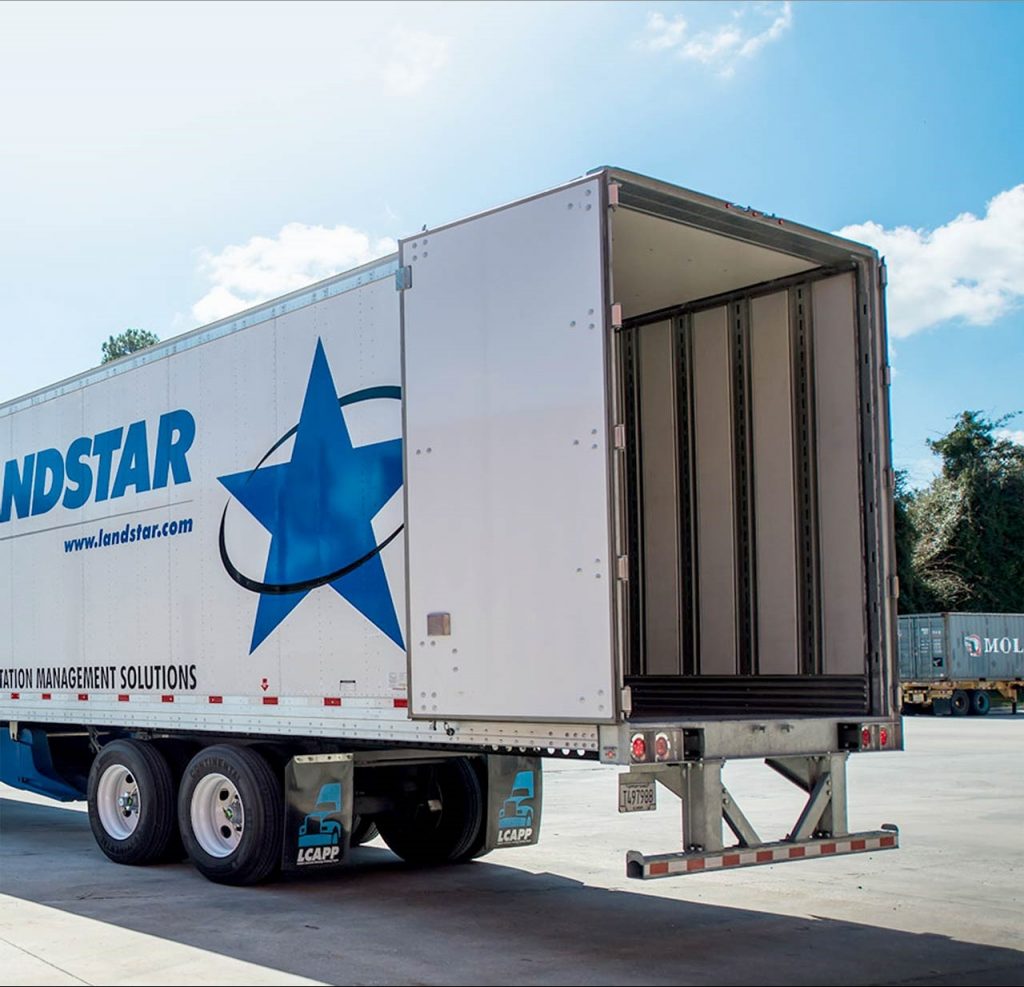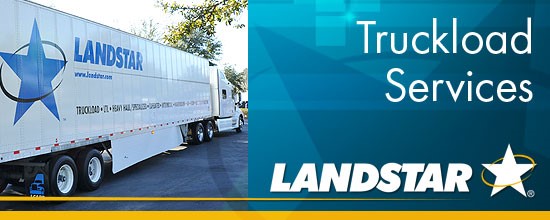Less-than-truckload (LTL) shipping refers to smaller loads that do not require a full truckload to haul. The weight and size of these partial loads can range from 150 – 10,000 pounds and one to several pallets. Typically, several LTL shipments are combined in one truckload to save the trucking industry on freight costs.

The shipper stages each LTL load according to the truck drivers’ stops along a predetermined route. Efficient staging reduces overhead for the trucking carrier and lowers costs for the shipper.
Factors That Influence LTL Costs
There are seven factors determine LTL freight rates. The primary factors are weight, density, freight classification, and distance. Trucking carrier base rates, minimum charges, extra services, and rate negotiation can also raise or lower costs.
Weight
Carriers figure LTL load shipment rates per hundred pounds. Weight and costs are indirectly proportional to each other. In other words, the higher the weight, the lower the shipping rate.
Density
Less than truckload carriers use freight density to determine shipment classification. To figure freight density, first determine the cubic volume of the freight. Since the pallet typically serves as the base for the shipment, multiply its length and width times the total height of the load. Include the height of the base pallet in your calculations.
Next, weigh the load. Divide the total weight by the total cubic volume of the shipment. The result is your shipment density.
Freight Classification
The National Motor Traffic Association (NMTA) maintains classification standards for freight using 18 classes from 50 to 500. The agency defines classification by shipment density, its value and liability, and how easy it is to load onto a trailer. The higher the class, the more expensive it is to ship the freight.
An example of freight classification – a pallet of bricks would be classified as 50 since it is dense of uniform size and height and unlikely to receive substantial damage. A pallet of ping-pong balls would be classified as 500. The balls are of low density and easily crush by a shifting load or a misstep with a forklift.
Distance
Distance determines the rate per 100 pounds of freight. Longer transportation distances equate to higher prices. You can reduce some of these costs by choosing the right carrier. For example, it is wiser to use a national chain to ship freight across the country. Although a local carrier may offer domestic freight services, they may transfer the shipment to a partner carrier to complete the delivery. This practice may cost you more in the long haul.
Base Rates and Minimum Charges
Carriers set their own base rates and minimum charges. Base rates can vary by shipping lane and carrier volume. For example, a carrier that needs more LTL volume may offer lower shipping rates.
Minimum charges apply to partial truckloads. There is a set amount of space per pallet on the trailer. If the load is undersized, the carrier could lose money. Imposing a minimum charge helps prevent these losses.
Surcharges
Surcharges are fees for extra LTL freight services. Typically, carriers transport freight from one shipping dock to another. Lift-gate, residential, and inside deliveries require more work for the driver. Additional surcharges also apply to areas where exclusive access is necessary, such as schools, correctional facilities, or military bases. Extra charges may also apply when a receiver picks up their load at a nearby transportation hub or warehouse.
Upcoming LTL Rate Changes
Recent LTL rates have been lower than usual. However, changes are already underway. Less than truckload shipping rates typically experience an annual general rate increase (GRI) in the late Fall. However, this year’s gains are already in effect. Although GRI amounts are not higher than expected, the earlier implementation still means shipping costs are up.
If demand remains high, a second GRI is not out of the question. There is typically only one rate increase per year. However, a few years have seen two GRIs within a 12-month cycle due to high demand. Although there are several reasons for LTL increases this year, five issues have enough impact to affect the transportation industry across the board.
Rising E-Commerce
Online retailers are increasingly offering free shipping to their customers. Now, these customers are buying goods immediately rather than waiting until their order gets them the best deal for their shipping costs. Online retailers remove the need for shipping from stores or warehouses by shipping to the customer directly. This adds emphasis for less than truckload shipments, decreasing the demand for a full truckload.
Growing Manufacturing Trucking Industry
The Institute for Supply Management (ISM) Index indicates a nine-month trend of expansion in manufacturing. This growth equates to increased demand for shipping raw materials to manufacturers. There is also an additional demand for shipping finished goods to distribution warehouses and customers.
Carrier Technology Improvements
New technology such as dimensioning machines, assists carriers in accurately predicting how much trailer space a shipment needs. The machines are more accurate than relying on NMTA classifications. Carriers can determine the exact area required for a shipment and how much is left over to share with another trucking company or shipment.
Driver Shortages
The summer months are ideal for vacationing. However, when too many drivers take vacation around the same time, it can affect carrier coverage. Another issue is that drivers may opt to take the summer off from trucking and work construction jobs instead. Coupled with high demand, fewer available drivers can lead to higher LTL freight rates.
Changes in Operations
Although new less-than-truckload carriers are a rarity, the transportation is always moving. Acquisitions and mergers among existing companies are common. These changes can significantly reduce the available capacity in the market.
Service area adjustments can also affect capacity. When areas are adjusted, service areas along the boundaries are affected most.
Reducing LTL Freight Costs

Although rate increases may be out of your hands, there are options for minimizing the impact. Try one or more of these strategies to reduce LTL shipping costs.
Use a Transportation Management System (TMS)
A TMS offers a wealth of services, including business intelligence and shipping optimization. The results are lower costs, improved efficiency, and a competitive edge in your global supply chain.
TMS representatives examine each LTL shipment, combining it with other loads on nearby routes whenever possible. This strategy builds full truckloads of freight for a multi-stop route. Additionally, TMS use their experience to help you choose an LTL carrier, verify shipping rates, and answer your questions regarding supply chain operations.
Use a Freight Consolidator to Ship Small Volumes
Freight consolidation companies use partial loads from multiple shippers to build full truckloads. This both improves efficiency and reduces costs for shippers. Contrary to popular belief, using a consolidation center does not mean your shipment sits around gathering dust. Many loads enter and exit within 24-hours.
Using a freight consolidator also means your shipment is not handled as much as a typical LTL shipment. Minimal handling reduces the risk of breakage and your customers, making fewer damage claims.
Negotiate Lower Rates
If you have a good handle on freight lanes and seasonal rate and capacity shifts within the transportation industry, you may be able to negotiate lower rates with your carrier. Another option is to work with a third-party logistics broker. A freight broker can use their expertise and existing carrier relationships to negotiate better rates on your behalf.
Optimize Packing and Report Accurate Shipment Information
It takes longer to handle freight that is improperly reported or poorly packaged. Verify the weight, freight class, and contents of your shipment are accurate before shipping. Also, make sure the freight is correctly packaged to minimize damages. For example, if you are shipping fragile pottery, nest smaller pots inside larger ones and use packing material around each item to reduce breakage.
Taking these precautions builds rapport with LTL carriers. Well-packaged, correctly labeled freight shipments cost less for the carrier to handle. Once you have a good working relationship with your LTL carrier, it may be worth asking if they are willing to pass along some of the savings.
Several factors influence LTL rates, including the type of freight you are shipping, available capacity, and seasonal fluctuations. Although some of these factors are outside shipper control, you can mitigate the costs of your trucking business by consolidating loads, building relationships with LTL carriers, and negotiating better prices.



 The most asked question a Landstar recruiter receives is, “how much money can I make when leasing with Landstar?”
...
The most asked question a Landstar recruiter receives is, “how much money can I make when leasing with Landstar?”
...

